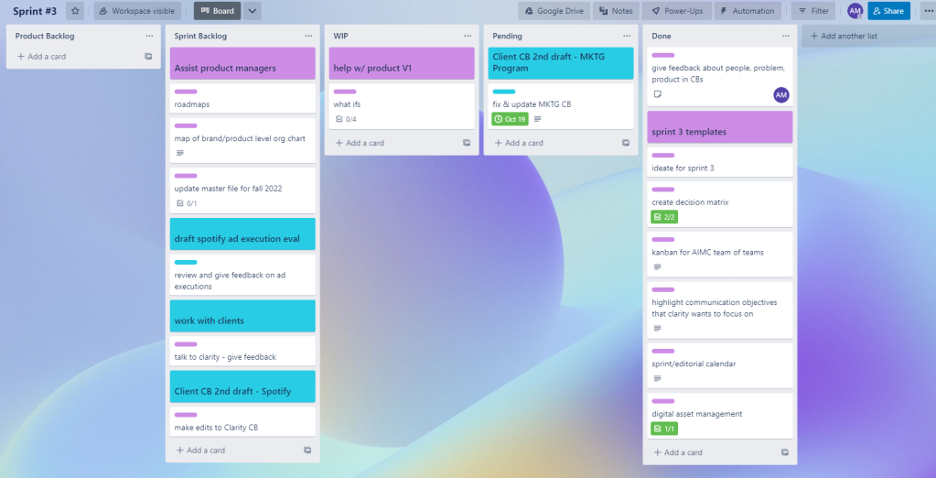Lessons Learned from Managing a Marketing Team
By Alana McCleese, Managing Editor of AIMC Fall 2022
I had no idea what to expect when I took on the role of Managing Editor in this quarter's Applied IMC (AIMC). I was thinking, "what did I say yes to?!" when reviewing information left for me to start planning for the class. Little did I know, this would be one of the most beneficial experiences I would have at WWU. I learned vital managerial skills, used the agile framework (or scrum), and even cultivated connections with faculty and students in the marketing program.
Read on to learn about my agile review and retrospective experiences in AIMC!
What went well
Being agile
The nature of this class requires a high level of adaptability, as the sprint structure, the fixed period of time (2 weeks in this class) where tasks are completed with a sprint goal in mind, changed drastically. Shifts in the schedule were due to setbacks within the teams or class as a whole such as scheduling, technical issues, communication, etc.
I felt comfortable going with the flow, handling issues as they came up instead of planning weeks in advance and losing that work if something changed.
Communication
Another important element in this class is communicating well within the "team of teams", the group of 4 managers and executive team. We used Teams to communicate in channels dedicated to each product team, a private manager's channel, and through private messaging.
We all responded quickly and transparently, often letting each other in on our frustrations and blockers against moving forward.
Participation
All members of the AIMC team were extremely involved in both their teams' products and projects within our team of teams. In weekly meetings with the product managers, I used stand-ups to gauge their participation with their team and what they were struggling with.
What could be improved
Following the process & using tools
One of the most difficult aspects of this class was learning to follow the process and fight the instinct to do things in the most comfortable way. This was something we didn't quite achieve, but we made progress compared to the beginning of the quarter.
For almost everyone in this class, scrum was a new concept. It took me a while to wrap my head around the sprint cycle, the difference between a sprint backlog and product backlog, and using a Kanban to organize my sub-deliverables.

My finished Kanban for Sprint 3
I was also providing the teams with new tools such as an editorial calendar, editing checklists, and a posting request form. The teams did not utilize these tools to their full potential - we could have been much more organized as a class.
Prescribing
Something I personally struggled with while leading a team was avoiding prescribing. It was difficult to stay neutral and guide the teams through the process of learning when I had insight into one "right" answer.
Lessons learned
- Creative tension. As the WWU Marketing Program's representative, I had a duty to maintain the client's wishes. However, sometimes the creatives in this class had opposing ideas to the client - they had a unique perspective being students who wanted the best for their fellow students. I learned to manage these conflicting opinions, recognizing that the creatives' customer is the client, not the WWU students or alumni.
- Helping vs. doing. I learned that I shouldn't make decisions for the teams - how will they learn from their mistakes? All I could do was control the process by creating tools to help the teams.
- Knowing-doing gap. We presume that knowledge alone is all it takes for someone to act. Think about how many stages a customer has to go through before they purchase - just knowing about a product won't make them buy! I learned that issues with productivity may not always be due to "not knowing how". People need motivation in addition to teaching.
Continuous improvement. I learned how to use PDCA cycle in management: plan, do, check, act. This allowed the teams to see the results of their products and make improvements for the future.

